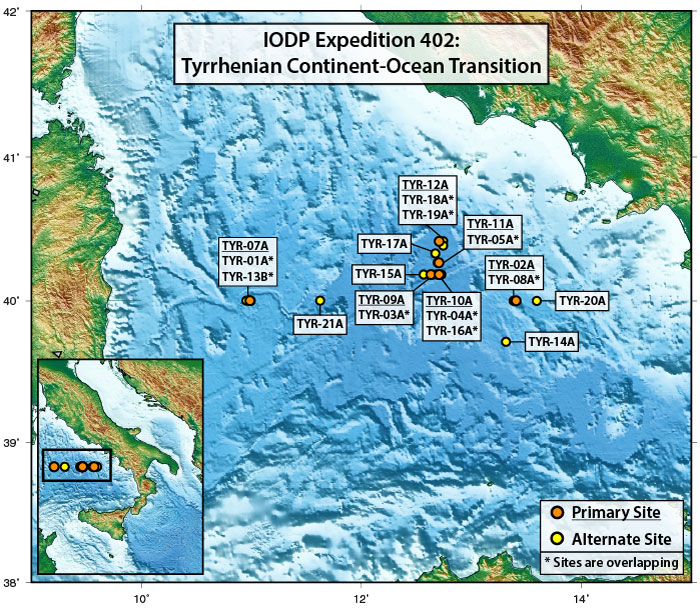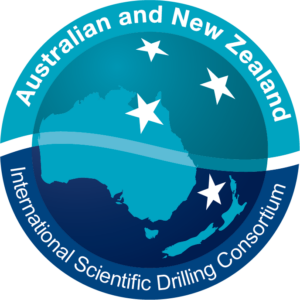Expedition 402: Tyrrhenian Continent - Ocean Transition
9 February - 8 April 2024
This call is now CLOSED.
Expedition 402 will investigate the temporal and spatial evolution of a continent-ocean transition (COT), from breakup to robust magmatism and subsequent mantle exhumation with closely time-related magmatism. The Tyrrhenian basin is the youngest basin of the Western Mediterranean, forming in the late Miocene to recent by continental extension related to rollback of the ESE-migrating Apennine subduction system. Recent geophysical and seismic data support the presence of magmatic rocks formed during the early COT phase, and of subsequently exhumed mantle. The drilling program of Expedition 402 is designed to target six sites along a west-east and north-south transect. Coring operations at each site will recover the complete sediment section including Messinian deposits, the sediment-basement interface, and peridotitic basement, followed by downhole logging. The recovered material and data will address the primary cruise objectives, which include the kinematics of the opening, the timing and origin of associated magmatism, the crust and mantle deformation mechanisms, and the relationship of melting products to the exhumed mantle.
Nannofossil biostratigraphy is crucial to the expedition objectives, in particular to date the oldest sediment at each site and to constrain the tectonic evolution from the sedimentation history. Recovered sediment will additionally facilitate paleoceanography and micropaleontology research programs.


For more information on the expedition science objectives:
This page includes links to the individual expedition web pages with the original IODP proposals and expedition planning information.
See also the Webinar Recording
